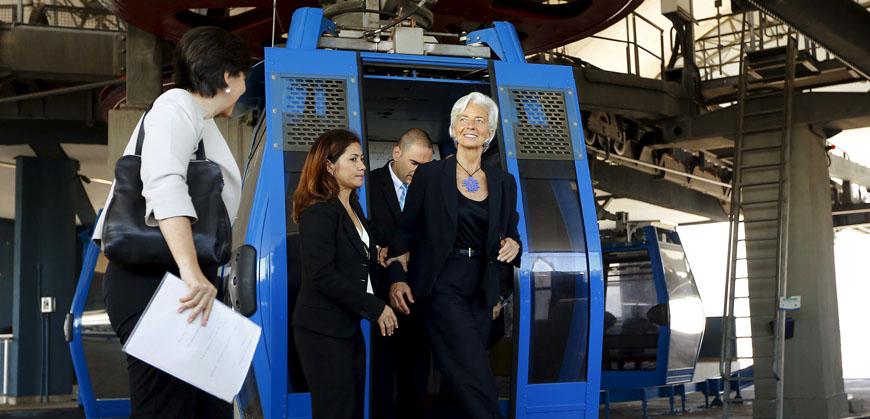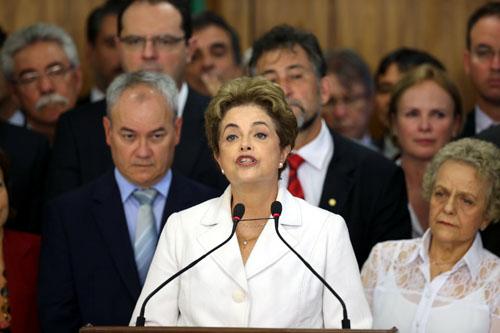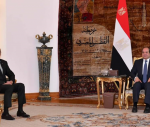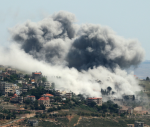You are here
Brazil's currency nears fair value after dramatic fall
By Agencies - Aug 17,2015 - Last updated at Aug 17,2015
BRASILIA/SAO PAULO — The Brazilian real is trading at or near fair value after losing one quarter of its worth since January 1, economists said, suggesting a possible respite for one of the year's most battered currencies.
Emerging market currencies in general have been sliding, and unexpected domestic and international events could still cause the real to overshoot towards its all-time low of 4 reais per dollar.
But even Brazil's political crisis, one of the main drags on the currency this year, does not look as bad as it did a couple of weeks ago.
Nine of 10 economists surveyed by Reuters estimate that, considering Brazil's economic fundamentals, the real is now fairly priced at between 3.20 per US dollar and the current level of 3.50. So far this year, it is the fourth worst performer among the 152 currencies tracked by Reuters, only outperforming those of Kyrgyzstan, Ukraine and Azerbaijan.
Economists acknowledge the real could keep falling as a weaker China cuts back on commodity imports from Brazil. But additional losses are looking less likely following signs that President Dilma Rousseff may be breaking a political logjam that has been blocking reforms.
"Could the worst be over for Brazil?" Brown Brothers Harriman emerging markets strategist Ilan Solot wrote in a research note. "Only time will tell. But the idea that we are approaching an inflection point is not as far-fetched as it was just a month ago."
A more stable currency comes at a crucial moment since it would help the central bank rein in inflation without a need for further rate hikes. It could also reassure Brazilian consumers, whose confidence has sunk to record lows.
Also shoring up the real is the central bank's decision to step up intervention in the foreign exchange market, as well as Moody's Investors Service's recent declaration that the country's investment grade rating was safe for the next couple of years.
Luis Stuhlberger, one of Brazil's most influential investors and widely respected for making huge profits betting against the real, joined the chorus last week in his Verde Asset Management's monthly letter.
"There are still no relevant capital flights, flows are reasonably balanced," he wrote. "The current exchange rate, considering carry costs, looks fairly priced."
Verde is Brazil's largest hedge fund, with about 30 billion reais ($9 billion) in assets.
Real threat
To be sure, a few banks, including Credit Suisse and Societe Generale, are still forecasting an all-time low of 4 reais per dollar in 2016.
Brazil's political crisis remains severe, and hundreds of thousands of Brazilians returned to the streets on Sunday to call for Rousseff's ouster.
"An impeachment [of Rousseff] is on the table," said Schroders emerging markets economist Craig Botham. "It's not an idle threat."
Botham, who oversees more than $470 billion in assets, agreed that an overshooting to 4-reais-per dollar could not be ruled out because of the uncertain political situation.
Still, there are tentative signs that the political crisis might be subsiding. The number of Brazilians marching on Sunday in Sao Paulo and Brasilia was roughly in line with similar protests in April but more modest than the turnout in March.
Also, a supreme court ruling last week granted Senate President Renan Calheiros, a government ally, more powers to prevent impeachment proceedings against Rousseff in congress.
Some economists believe the real could weaken slightly beyond its fair value without overshooting to all-time lows. Alberto Ramos, head of Latin America research at Goldman Sachs, said a range of 3.65 to 3.75 would be preferable to help local manufacturers and to narrow Brazil's current account gap.
"The real is now trading broadly in line with its fundamental fair value," Ramos wrote in a note. "However ... a slightly weaker real would support the struggling tradable sectors of the economy and increase the efficiency of the [macroeconomic] adjustment."
Separately, the outlook for Brazil's economy worsened Monday with gross domestic product (GDP) contraction forecast to extend into next year and inflation projections also slightly rising.
A central bank survey of economists showed the economy is on course to shrink 2.01 per cent this year and for the first time indicated that the contraction will continue through 2016 with a shrinkage of 0.15 per cent.
The survey also showed that inflation remains forecast at 9.32 per cent this year, but it raised the 2016 projection for price rises to 5.44 per cent from 5.43 per cent.
The numbers come as the world's seventh largest economy is struggling with a political crisis and a massive corruption scandal that has badly damaged state-owned oil giant Petrobras.
Moody's cut Brazil's credit rating to near junk status last week, reflecting growing struggles with debt.
Related Articles
BRASILIA/RIO DE JANEIRO — Brazil will freeze 69.9 billion reais ($22.58 billion) worth of spending on investment, education and health progr
BRASILIA — Brazilian President Dilma Rousseff's government vowed on Monday to fight impeachment after the lower house of congress delivered
BRASILIA — Suspended Brazilian President Dilma Rousseff vowed on Thursday she would fight to prove her innocence after the senate voted to p

















